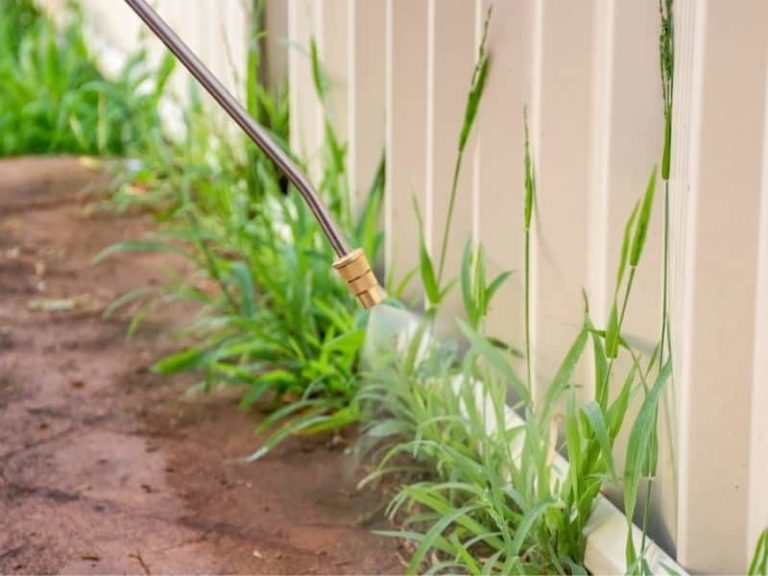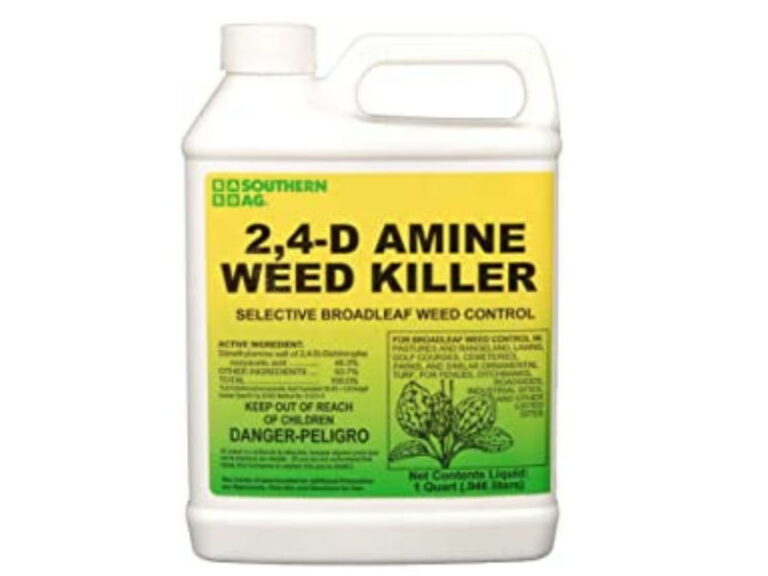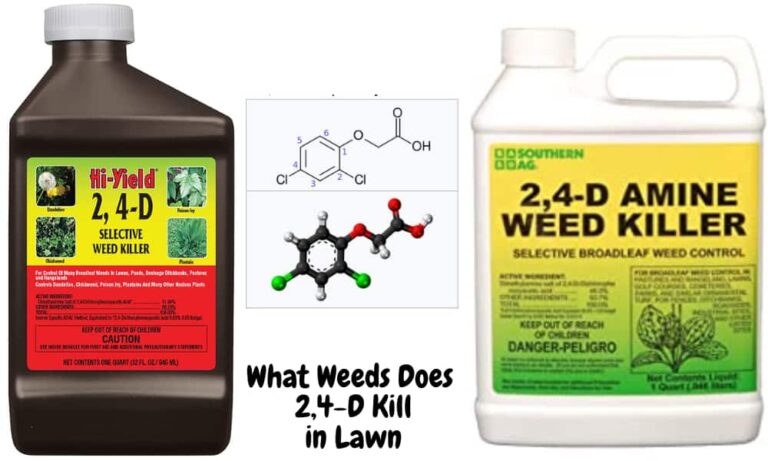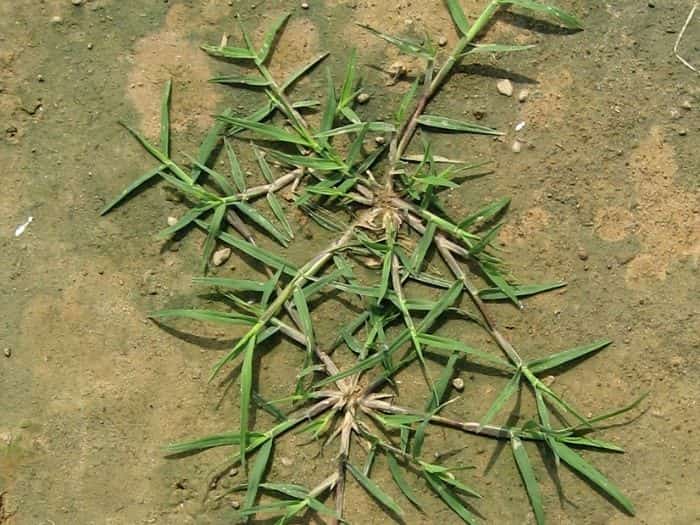How to Get Rid of Grass Burrs + Best Killers for Lawn Stickers
When grass burr weeds invade your lawn, they will prick your feet, making it uncomfortable to walk or play barefooted. The burr seeds are challenging to identify, and you can only notice them in your lawn after their spikes prick your feet.
Grass burrs are difficult to remove once established on the lawn. However, with proper cultural lawn maintenance and using the best herbicides, you can get rid of the stickers and enjoy the runs and plays on your lawn again.
What are lawn stickers (grass burrs)?
The scientific name for grass burrs is Cenchrus echinatus. Lawn stickers are also called field sand burs, pricking monsters, grass stickers, burr stickers, lawn burrs, sticker weeds, burweed, and sticker burrs.
There are three varieties of grass burrs, namely: field sandbur (Cenchrus spandex Cav.), longspine sandbur (Cenchrus longisinis Hackel Fern.), and Southern sandbur (Cenchrus echinatus L.).
How to get rid of grass burrs in lawns
Removing grass burrs seeds can be easy; however, removing established grass burrs from the lawn is challenging. The best method to remove the burrs is to prevent their seeds from growing on the lawn by maintaining a healthy lawn.
Below are methods to prevent grass burrs seeds from growing on the lawn and removing established grass burrs.
1. Maintain a thick lawn
Grass burrs are opportunistic weeds and will grow on the lawn if the slightest favorable conditions are available. Grass burrs contain seedheads with seeds that absorb and keep moisture. When sunlight and temperatures become favorable, they grow and invade the lawn.
Keeping turf dense, thicker, and healthy will give it a better chance to thrive and outcompete grass burrs. Mow the lawn frequently at slightly higher heights to prevent the grass burrs seeds from getting sunlight to germinate. Mowing often helps maintain thick, denser turf that doesn’t allow burrs to grow.
Water the lawn weekly between 1.0- 1.5 inches to ensure turf gets enough water to grow stronger, deeper roots. If you water lightly, grass burrs and other shallow-rooted weeds and seeds will germinate.
Applying fertilizers to turf grass supplies it with the required nutrients to flourish. Turfs lacking essential nutrients are unhealthy and weak, and weeds outcompete them. After a soil test to determine pH and available nutrients, apply fertilizers recommended by your nearby university extension agriculturalist officer for healthier turf.
Mow, fertilize, and water the lawn correctly to favor turfgrass growth and not the grass burrs for a thick, denser lawn.
Fill any bare spots on lawns with new seeds or add sod to deny the burrs space to grow and emerge on the lawn. Also, reseed weaker turfs to prevent grass burr infestation.
2. Kill the seeds during winter
Grass burrs seeds stay dormant in the soil during winter but flourish in spring. Remove or kill the seeds during the winter to prevent them from attacking your lawn in spring.
Mow at lower heights with a bag to capture and remove the seeds from the lawn to prevent them from sprouting in spring. You can also pass a piece of clothing or blanket on the lawn to capture the seeds and remove them.
Another way to kill the seeds before germinating is by applying pre-emergent herbicides.
3. Apply grass burr killers
Grass burrs killers are herbicides used to kill the seeds to prevent them from growing and killing established burrs. They are pre-emergent and post-emergent herbicides.
Pre-emergent herbicide
Pre-emergent herbicides kill weed seeds, thus preventing them from growing on the lawn. Apply pre-emergent herbicide before the burrs seeds germinate and when the soil temperature is 520F. You can use them in early spring too.
An example of a pre-emergent herbicide to control burrs on Bermudagrass and other warm-season grasses is Prowl H2O. Apply the herbicide at a rate of 1.1 to 4.2 ounces per acre. Apply it in February or early March before the grass breaks dormancy. Irrigate the lawn or rain 10-14 days within the application to make the herbicide more effective and kill more seeds.
Another pre-emergent herbicide to use on Bermudagrass is pendimethalin, applied at a rate of 0.5-0.75 ounces per acre. Irrigation or rain within seven days of application will make the herbicide more effective.
Applying post-emergent herbicides
Post-emergent herbicides are used when the grass burrs are still young, about 1.5 inches tall, and actively growing in spring. Most post-emergent herbicides are systemic non-selective; take maximum caution to avoid burning the desired turf. Use post-emergent herbicide in May and June.
An example of a post-emergent herbicide that can work perfectly to kill the burrs is DSMA or MSMA. This herbicide contains glyphosate and is non-selective. While applying it, be sure to spot spray the grass burrs and prevent the herbicide from contacting nearby desired turf. Add MSMA herbicide when the soil temperature is 75oF on a sunny day. It’s also important to spray the herbicide when the weather is calm to prevent the herbicide from landing in undesired places such as nearby walkways or driveways.
For established grass burrs, extend the herbicide to the soil and reapply it every six weeks to eradicate the burrs from the lawn. If the lawn has a light infestation, apply the herbicide two times at an interval of 6 weeks.
For more effectiveness, mix MSMA at a rate of 2.0 lbs of active ingredient per acre with 38lbs of active ingredient per acre of Imazaquin. Imazaquin is safe when used on bermudagrass, centipede grass, and zoysiagrass.
You can also mix MSMA with sethoxydim to kill grass burrs on centipede grass. Sethoxydim is labeled to kill burrs on centipede grass only.
Check out the below list for the best effective post-emergent herbicides to kill established grass burrs on your lawn.
Best grass burr killers
Herbicides are the only solution to killing established grass burrs on the lawn. These herbicides have varying effectiveness, depending on their composition and active ingredient. We have compiled a list of three best-tested herbicides for killing grass burrs from the lawn.
Pastora Herbicide
Pastora is a dry-flowable granular herbicide for perennial and annual broadleaf weeds. Pastora is majorly used in established Bermudagrass without other turf mixtures. Its active ingredients are Nicosulfuron and Metsulfuron Methyl.
When applied, the weeds’ leaves and roots absorb the herbicide, and its translocated throughout the plant to inhibit growth, thus killing the burrs. Pastora herbicides are best applied when the weeds are small, about 1.5 inches tall, and actively growing. Use Pastora on a bermudagrass that has grown to at least one growing season. The weeds should be stress-free from cold or drought at the control time.
Performing a soil test to determine the soil pH is compulsory before using any Pastora herbicide on grass. Apply herbicide after mowing bermudagrass to a less than 4 inches tall to allow the sand burrs to absorb more herbicide and prevent Bermuda injury by reducing its surface area. The burrs should be less than 1.5 inches tall and actively growing.
Add Pastora herbicide at a rate of 1.0 to 1.5 ounces per acre if using the broadcast method. However, mix 2.5 ounces of Pastora herbicide per 100 gallons of water when spot spraying to suppress the weeds. Be sure to use a sprayer with a tiny nozzle when spraying and cover the foliages and stems with the herbicide for more effectiveness. Don’t apply more than 2.5 ounces of Pastora annually.
Sometimes grass burrs will germinate after applying Pastora for the first time. In that case, reapply the herbicide after six weeks to suppress the grass burrs completely.
You will notice signs such as yellowing leaves and brown spots one to three weeks after application, and the weeds will eventually die. Note that Pastora herbicide can cause stunted growth in bermudagrass for 30 days after application.
Roundup Power Max
Roundup power max is a foliar herbicide used to control annual and perennial grass and weeds with broad leaves. Glyphosate is the active ingredient in roundup power max. When applied to weed’s leaves and grasses, the leaves and the roots absorb the product and translocate it to the rhizomes and stolons to inhibit growth.
Roundup power max is water-soluble; you can use it as granules or foliar. Apply the herbicide when grass burrs are actively growing with at least 5cm of broad leaves to reduce chances of regrowth. The grass burrs should be stress-free from drought, heat, or frost. The grass should be short to allow the herbicide to reach the burrs easily and reduce the turf’s surface area exposed to the herbicide.
Mix 2 ouches of roundup power max per gallon of water when applying the herbicide as a broadcast. If using the herbicide as granules, water in lightly to ½ an inch into the soil to activate the herbicide for easy grass burrs roots absorption. Rain within six hours of applying round up can make it less effective.
Don’t mix roundup power max with adjuvants, fertilizers, or pesticides unless specified. Roundup power max is highly effective and will kill grass burrs or annual weeds within 2 to 4 days of application, but you will notice yellowing leaves or wilting six hours after applying it. Roundup power max is systemic; it kills the entire weeds system and the roots. Thus, grass burrs weeds will not regrow after the first application.
Imazapic
Imazapica is a selective herbicide with pre-emergent and post-emergent activities used to control broadleaf weeds, some annual and perennial grasses. Ammonium salt of Imazapic is the active ingredient in this herbicide.
When you apply Imazapic to grass burrs, the leaves, stem, and roots absorb it, rapidly translocating it to the entire plant system. Imazapic inhibits enzyme acetohydroxy acid synthesis (AHAS) activities that catalyze the production of amino acids called isolecine, leucine, and valine. These amino acids are essential for protein synthesis and cell growth. Imazapic inhibits activities of the AHAS enzyme, thus producing no amino acids resulting in no protein synthesis or cell growth.
The grass burrs slowly die due to the absence of proteins. Imazapic is water-soluble and applied as a spot treatment or broadcast. It selectively kills weeds and grasses depending on the rate of application and the grass or weed species. Imazapic is non-volatile and doesn’t leach away when applied; thus, it controls environmental pollution.
You can add an adjuvant such as methylated seed oil to increase effectiveness when using Imazapic as a post-emergent herbicide to kill burrs.
For total control, mix Imazapac with other herbicides, such as roundup. Be sure to apply the roundup and Imazapic mixture using the spot spray method because the roundup can kill desirable turfgrass.
If using Imazapic as a post-emergent herbicide, apply it at a rate between 4 and 8 ounces per acre, depending on the weed or grass species and where it’s sprayed. Imazapic kills weeds slowly, and signs like yellow leaves and wilting would be seen more than a month after application.
Why are grass burrs prevalent in Texas?
Grass burrs are adapted to thrive in acidic sandy soils readily found in most parts of Texas.
Though grass burrs can survive in most soils, they grow best in acidic sandy soils. Texas has many parts, e.g., Central Texas mainly covered in sandy soil. In Texas, you will find all the types of sand burrs growing because of the favorable sandy soil which supports their growth.
Are grass stickers poisonous?
Grass stickers are non-toxic, though they cause discomfort, pain, and allergic reaction when the stickers stick on people or pets.
Grass stickers produce needle-like stickers that stick on people’s clothing or feet and pets’ fur. The stickers can prick you, your kids, or pets, causing pain and discomfort. Sometimes, the stickers irritate the skin when they contact it.
References
- James A. McAfee, Associate professor and Extension Turfgrass Specialist Dallas, Texas, Texas A&M University: Sandbur or Grassbur Control
- PennState Extension: Introduction to Weeds and Herbicides
Alabama and Auburn Universities Extension: Home Lawn Maintenance

![Crabgrass Removal Tool [3 Best Weed Pullers for Crabgrass]](https://lawnmodel.com/wp-content/uploads/2020/11/Fiskars-Crabgrass-Removal-Tool.jpg)




